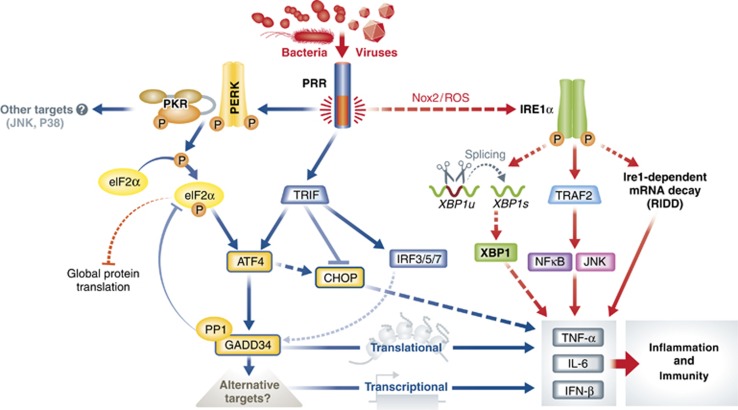Figure 4.
Schematic description of the MSR. During the MSR, microbes- and virus-associated molecular patterns (e.g., LPS) are sensed directly or indirectly by different receptors, such as Toll-like-receptors (TLRs), Rig I-like receptors (RLRs) or the dsRNA-sensing kinase (PKR), which through complex signalling cascades, involving the TRIF adaptor and different TRAF ubiquitin ligase, leads to the nuclear translocation of NFkB or IRF-3, and subsequent IFN-I and inflammatory cytokines transcription. Microbial detection leads also to GADD34 expression, which, however, in this context has little effect on controlling global translation, while participates in the regulation of cytokine production both at the translational and transcriptional level. During the MSR, XBP1 splicing levels varies greatly according to cell models and microbe stimulus used; however, a striking distinctive feature of this pathway is the translational inhibition of CHOP synthesis, together with enhanced level of eIF2α de-phosphorylation, GADD34 and expression. GADD34, ATF4 and XBP1 are likely to favour the expression of cytokines through the targeting of yet undefined partners at the translational, signal transduction and transcriptional level. Cross-talks between the UPR and MSR clearly exist, and the direct activation of the TRAF2 or RIDD pathway by IRE1 and subsequent inflammatory cytokines transcription could be an example of those commonalities.

